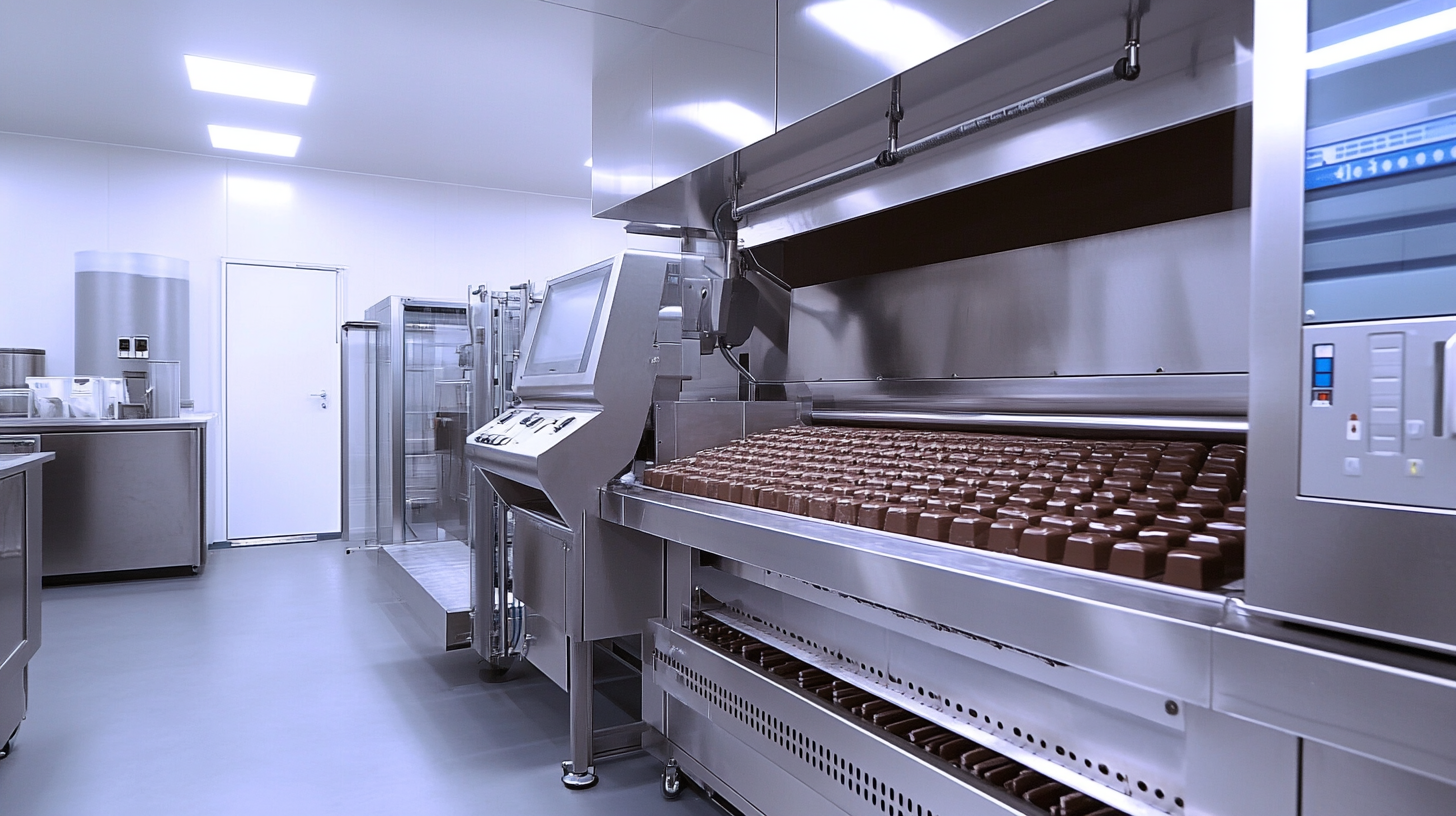Challenges Faced by Buyers of Tempering Machines for Chocolate
The chocolate industry has witnessed significant growth over the past decade, with the global chocolate market valued at approximately $150 billion in 2021 and projected to reach $200 billion by 2028. As consumer demand for high-quality chocolate products increases, the importance of precise chocolate tempering has become paramount. A key element in the production process, the Tempering Machine for Chocolate plays a vital role in achieving the desired texture, gloss, and snap that distinguishes premium chocolates from average ones. However, the acquisition and use of these specialized machines come with a unique set of challenges that can impact both small artisanal producers and larger manufacturers alike.
Buyers of Tempering Machines for Chocolate often face obstacles related to the selection of the right equipment to meet their specific production needs. With various machines on the market, differences in technology, capacity, and price can complicate decision-making. Furthermore, as noted in a report by the International Cocoa Organization, maintaining consistent quality in chocolate requires not just proper tempering methods but also reliable machinery that can adapt to evolving production demands and consumer preferences. Understanding these challenges is essential for buyers looking to invest in tempering machines that will enhance their chocolate production capabilities while ensuring a high-quality end product.

Identifying the Right Specifications for Chocolate Tempering Machines
When it comes to selecting chocolate tempering machines, buyers often face a myriad of challenges, particularly when it comes to identifying the right specifications. The tempering process is crucial for achieving glossy finishes, crisp textures, and stable chocolate, making it imperative for manufacturers to invest in machines that meet their unique production needs. Understanding the key specifications will pave the way for informed decision-making. One of the primary factors to consider is the machine's capacity. Depending on the scale of production, buyers must assess how much chocolate needs to be tempered at any given time. Larger factories may require machines that can handle substantial loads efficiently, while smaller artisanal chocolatiers might prioritize compact designs that are easier to manage. Additionally, the temperature control system is critical; precise thermoregulation ensures that the chocolate reaches and maintains optimal temperatures for tempering, thus guaranteeing a consistently high-quality output. Moreover, the type of chocolate being processed plays a significant role in choosing the right tempering machine. Various chocolates—such as dark, milk, or white—have different melting points and tempering requirements. As such, machines equipped with adjustable settings that can accommodate these variations can greatly enhance versatility and efficiency in production. With the right specifications at hand, buyers can navigate through their options confidently and select the machine that best aligns with their production goals and quality standards.

Navigating Budget Constraints While Ensuring Quality and Performance
When investing in tempering machines for chocolate production, buyers often find themselves grappling with the dual pressures of budget constraints and the need for high-quality equipment. This delicate balancing act requires a strategic approach to ensure that quality and performance are not sacrificed for cost savings.
One effective strategy is conducting thorough market research to identify various tempering machine options that meet both the functional requirements of chocolate production and the financial limitations of the buyer. By comparing features, energy efficiency, and production capacities while keeping an eye on customer reviews, buyers can make informed decisions that align their equipment choices with their budgetary constraints.
Additionally, exploring financing options can provide buyers with the flexibility they need. Many equipment suppliers offer leasing or financing plans that spread out the costs over time, making high-quality machines more accessible without an overwhelming upfront investment. This allows businesses to maintain competitive production standards without compromising their financial stability, ultimately leading to better long-term outcomes. By leveraging market insights and financing solutions, buyers can navigate their budget challenges effectively while ensuring that they invest in performance-driven tempering machines.

Understanding Different Types of Tempering Machines and Their Applications
When it comes to selecting the right tempering machine for chocolate, buyers face a myriad of challenges related to understanding the different types of machines available and their specific applications. Tempering is a delicate process essential for achieving the right texture and sheen in chocolate products. Buyers must navigate through various options, including batch tempering machines, continuous tempering systems, and temperature control technologies. Each type offers unique advantages depending on production requirements and scale.
Batch tempering machines, ideal for small-scale operations, provide precise temperature control but may not keep up with high-volume demands. On the other hand, continuous tempering systems are designed for larger enterprises, offering efficiency and consistent output. Additionally, understanding the thermal dynamics and material requirements of different chocolate formulations influences the choice of equipment. Machines need to be capable of handling varying cocoa butter contents while maintaining quality.
Moreover, the applications for tempering machines extend beyond traditional chocolate production. Considerations such as the integration of automation technologies and energy efficiency are also paramount, as buyers are increasingly focused on sustainability. Thus, selecting the right tempering machine is not merely about functionality; it involves evaluating innovations and trends that can enhance the overall production process and meet evolving market demands.

Evaluating Supplier Reliability and After-Sales Support for Equipment
When purchasing tempering machines for chocolate production, buyers often face significant challenges, particularly regarding supplier reliability and the quality of after-sales support. According to recent industry reports, approximately 70% of chocolate manufacturers cite supply chain issues as a primary obstacle to maintaining production efficiency. This highlights the necessity for buyers to thoroughly evaluate their suppliers beyond just pricing and machine specifications.
Supplier reliability can be quantitatively assessed using various metrics, including on-time delivery rates and historical performance data. A study on supplier credit risk assessment notes that machine learning algorithms can enhance the evaluation of supplier risk by analyzing past interactions and performance in the supply chain. Such technology can provide buyers with insights into supplier capabilities, ensuring they partner with reliable vendors who can meet their operational demands.
Moreover, after-sales support is critical in minimizing downtime and ensuring optimal machine performance. Research indicates that over 60% of buyers report dissatisfaction with after-sales services, which can lead to increased operational costs. By prioritizing suppliers that offer robust support programs and clear communication channels, buyers can mitigate risks associated with maintenance and technical assistance, thereby securing the longevity of their investment in tempering machines.
Addressing Maintenance and Operational Challenges in Tempering Processes
The maintenance and operational challenges faced by buyers of tempering machines for chocolate manufacturing are critical to ensure consistent product quality and process efficiency. One major concern is the integration of advanced machinery that necessitates regular upkeep to prevent disruptions in production. As chocolate manufacturers strive to meet increasing consumer demands, the complexity of tempering processes also escalates, requiring in-depth knowledge of machine operations and preventative maintenance strategies.
The importance of optimizing ingredient use alongside machinery maintenance cannot be underestimated. By focusing on both aspects, manufacturers can significantly boost efficiency and reduce operational costs. The challenges of sediment buildup and machine wear highlight the need for rigorous inspection protocols and proactive maintenance approaches. The commitment to staying ahead of these challenges can lead to enhanced production capabilities and greater customization in the chocolate offerings.
Moreover, the industry is undergoing a shift towards in-house manufacturing, which allows companies to maintain tighter control over quality and operational efficiencies. This trend emphasizes the necessity for robust maintenance schedules and training for personnel to navigate the intricacies of modern tempering machines. As the chocolate processing landscape continues to evolve, addressing these maintenance and operational challenges will be essential for businesses aiming to thrive in a competitive market.

